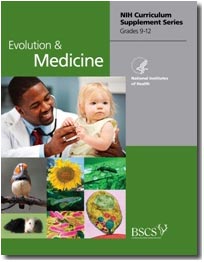The National Research Council of the National Academies has released a report titled Transforming Glycoscience: A Roadmap for the Future. The report was sponsored by several NIH institutes, including NIGMS, along with the U.S. Food and Drug Administration, the National Science Foundation and the Department of Energy. It was prepared by the Committee on Assessing the Importance and Impact of Glycomics and Glycosciences, chaired by David Walt of Tufts University.
The committee was charged to “articulate a unified vision for the field on glycoscience and glycomics” and to “develop a roadmap with concrete research goals to significantly advance [them].”
Their major recommendations are that NIH, NSF, DOE and other relevant stakeholders place a high priority on the development of:
- Transformative methods for the facile synthesis of carbohydrates and glycoconjuates;
- Transformative tools for the detection, imaging, separation and high-resolution structure determination of carbohydrate structures and mixtures; and
- Transformative capabilities for perturbing carbohydrate and glycoconjugate structure, recognition, metabolism and biosynthesis.
The report also supports the development of:
- Robust, validated informatics tools to enable accurate carbohydrate and glycoconjugate structural prediction, computational modeling and data mining. This capability will broaden access of glycoscience data to the entire scientific community.
- A long-term-funded, stable, integrated, centralized database that includes mammalian, plant and microbial carbohydrates and glycoconjugates and has links to other databases. The deposition of new structures using a reporting standard should be required.
- Integration of the glycosciences into the science curriculum.
While NIGMS has a long history of investment in the glycosciences, including funding for the Consortium for Functional Glycomics glue grant and the development of methods and tools required for a full glycomics effort, the report sets an ambitious pace that would require a broad, multidisciplinary, multi-agency effort. It’s possible that the report may help guide the development of future NIH initiatives in the areas identified.
Gerald Hart, Johns Hopkins University School of Medicine and a member of the committee that prepared the report, will brief the NIGMS Advisory Council of its findings at its September meeting. NAS staff involved in developing the report will also be in attendance to respond to questions.


 With NIGMS support through a Recovery Act grant, the American Society for Cell Biology has established
With NIGMS support through a Recovery Act grant, the American Society for Cell Biology has established  . The resource is a freely accessible, easy-to-search, public repository of reviewed and annotated images, videos and animations of cells.
. The resource is a freely accessible, easy-to-search, public repository of reviewed and annotated images, videos and animations of cells.

 In addition to their systems-level studies of complex biological phenomena, the NIGMS-supported
In addition to their systems-level studies of complex biological phenomena, the NIGMS-supported